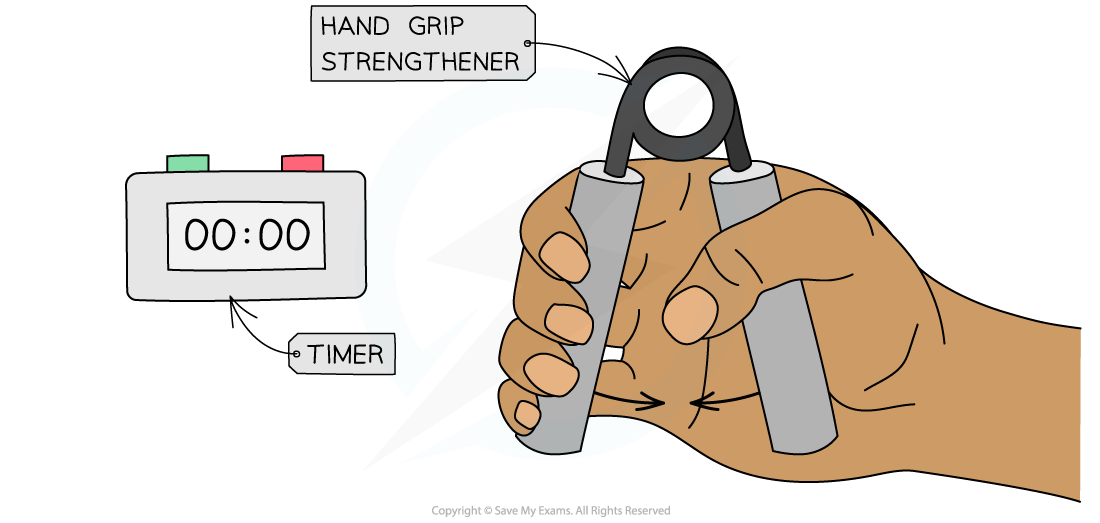- 翰林提供学术活动、国际课程、科研项目一站式留学背景提升服务!
- 400 888 0080
AQA A Level Biology复习笔记6.3.6 Investigating Muscle Fatigue
Investigating Muscle Fatigue
- Prolonged or sustained exercise requires the repeated contraction of muscles
- Over time this can cause muscles to fatigue so they are no longer able to contract at the same rate
- The availability of calcium ions may decrease after repeated contractions
- Calcium ions are essential in moving tropomyosin away from the actin-binding sites
- They are also responsible for activating ATPase
- Lactate is also produced after repeated contractions
- Anaerobic respiration provides a supply of ATP for muscles contraction. It also produces the waste product, lactate
- Lactate lowers the pH of muscles and affects the contraction of fibres
- Many different types of experiments can be conducted to investigate the effect of repeated contraction on the rate of muscle fatigue
Apparatus
- A hand grip strengthener
- A timer
- Willing human subjects

The apparatus used for an experiment investigating muscle fatigue in the hands
Method
- Ask the subject to squeeze the handgrip strengthener to bring the two handles together as many times as they possibly can within 20 seconds
- Record the number of successful squeezes
- Repeat this 10 more times, recording the result each time
- Do not allow more than 5 seconds rest between each repeat
- Repeat the experiment with other human subjects
Results and analysis
- The results can be plotted on a graph to show how the number of successful squeezes decreases as the experiment progresses
- The same hand muscles are being used repeatedly therefore over time these muscles should fatigue. The subject should not be able to do as many squeezes of the hand strengthener at the end of the experiment compared to at the start
Limitations
- This experiment only looks at muscle fatigue of the hand muscles
- Other skeletal muscles may fatigue at different rates
- Ideally, an experiment would study multiple muscle groups
- The time limit may not be long enough to exhibit muscle fatigue for some individuals
- The hand grip strengthener may be too difficult to open and close for some individuals, even at the start of the experiment
转载自savemyexams

早鸟钜惠!翰林2025暑期班课上线

最新发布
© 2025. All Rights Reserved. 沪ICP备2023009024号-1








